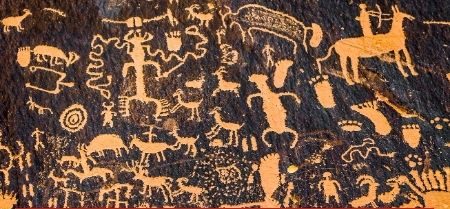Discovering Petroglyphs Near Moab and Arches National Park
Moab and the surrounding areas, including Arches National Park, are rich with fascinating petroglyphs left behind by ancient peoples. These rock carvings and drawings offer a glimpse into the lives, beliefs, and culture of the Native American tribes who lived here thousands of years ago. Here’s a guide to the best places to find petroglyphs near Moab, along with insights into their meanings and significance.
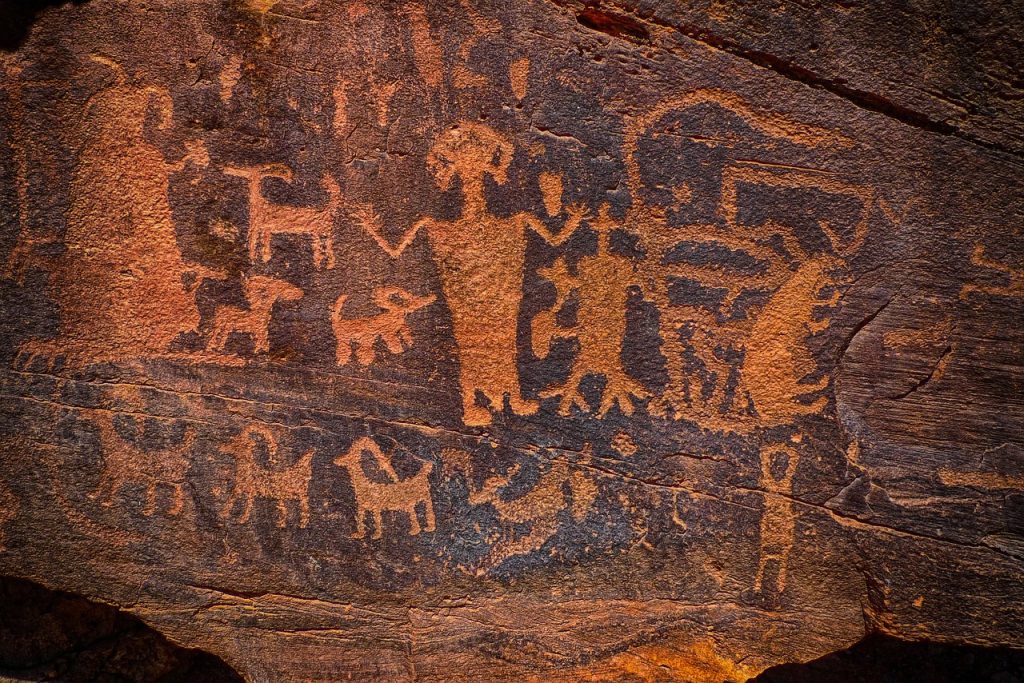
Petroglyph Sites Near Moab
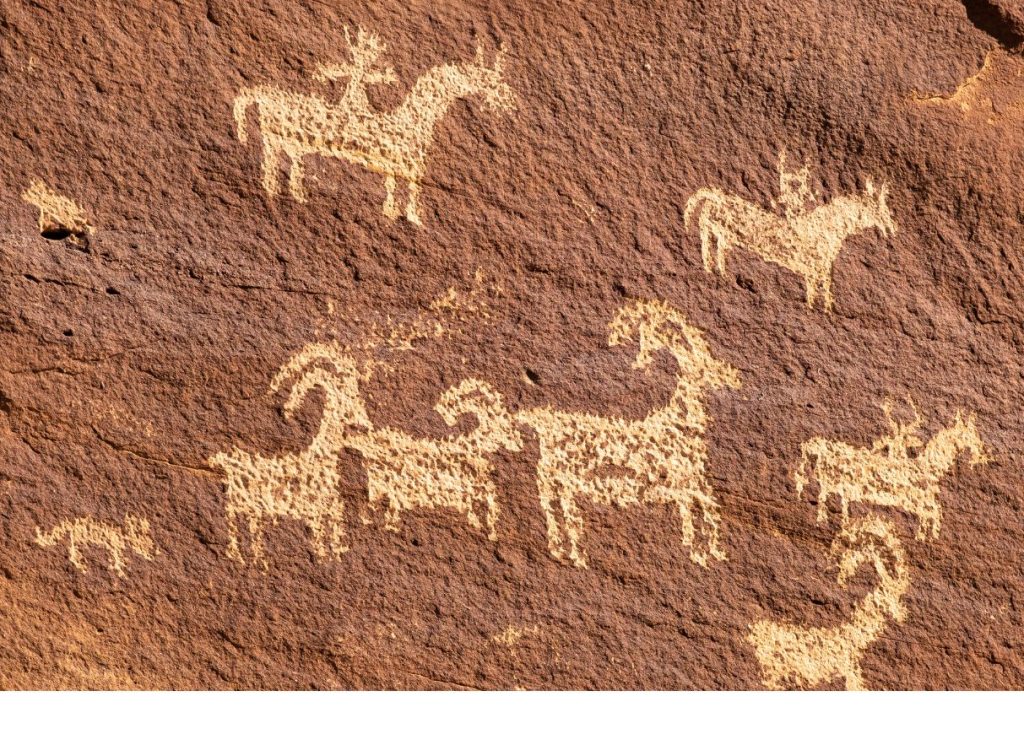
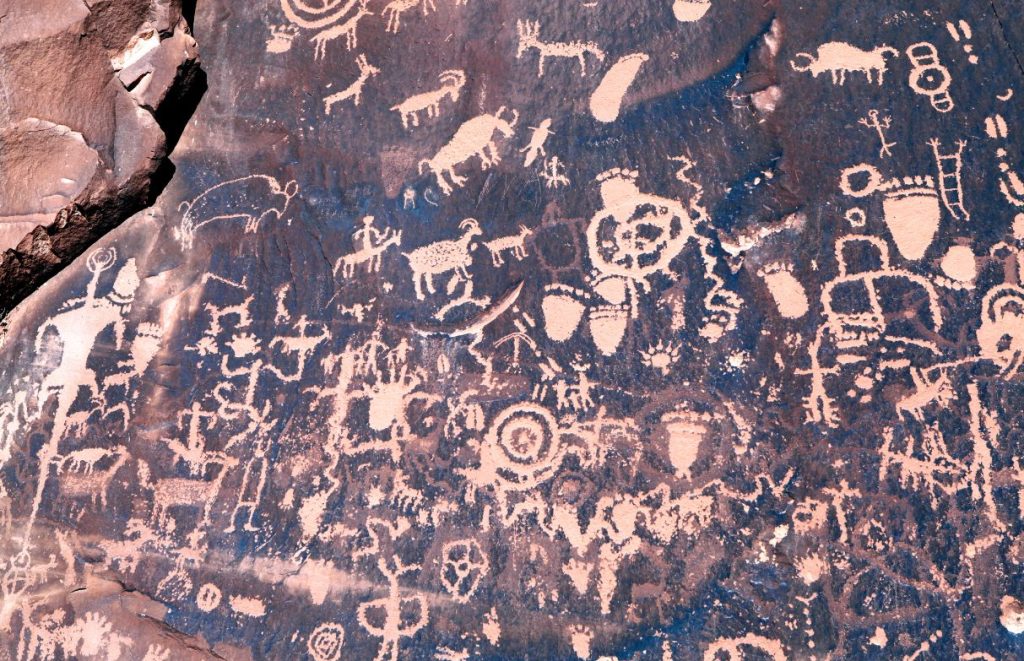
Potash Road (Utah Scenic Byway 279)
Location: Along Potash Road, just 5 miles outside Moab
Accessibility: Easy access along the roadside
Significance: This area contains some of the most accessible and intricate petroglyphs in the Moab area. The carvings depict various animals, including bighorn sheep, human figures, and mysterious geometric shapes.
Highlights:
- The petroglyphs are thought to be created by the Ancestral Puebloans, who lived here around 600 to 1300 AD.
- Interpretations of these carvings suggest they represent hunting scenes, spiritual rituals, and daily life, though many images remain mysterious.
Courthouse Wash Panel
Location: Along Courthouse Wash, at the southern entrance of Arches National Park
Accessibility: Short hike required from the parking area off Highway 191
Significance: This panel contains both petroglyphs and pictographs, with images created by multiple cultures over centuries. Some images date back over 2,000 years.
Highlights:
- The Courthouse Wash Panel features unique and colorful pictographs painted onto the rock, alongside petroglyphs carved into the surface.
- The panel includes figures wearing headdresses and representations of animals like snakes and bighorn sheep, believed to have ceremonial or religious significance.
Birthing Rock
Location: Kane Creek Boulevard, southwest of Moab
Accessibility: Easily accessible by car
Significance: Known for its distinctive “birthing” petroglyph that depicts a woman in childbirth, Birthing Rock holds special cultural significance and is believed to represent fertility or the cycle of life.
Highlights:
- This unique carving is surrounded by other petroglyphs, including human figures, animals, and abstract shapes.
- The site is named after the iconic “birthing” image, but the surrounding figures add depth, depicting elements of everyday life and mythology.
Newspaper Rock
Location: Indian Creek Canyon, 53 miles south of Moab along Highway 211
Accessibility: A quick stop along the road, easily accessible by car
Significance: Newspaper Rock is one of Utah’s most famous rock art sites, with over 650 symbols etched into the rock face. It features an array of images spanning hundreds of years.
Highlights:
- The symbols include various animal tracks, abstract shapes, and human figures, created by the Ancestral Puebloans, Fremont, and later Native American tribes.
- The diverse images are thought to be messages, symbols of travel, or records of important events, though much remains open to interpretation.
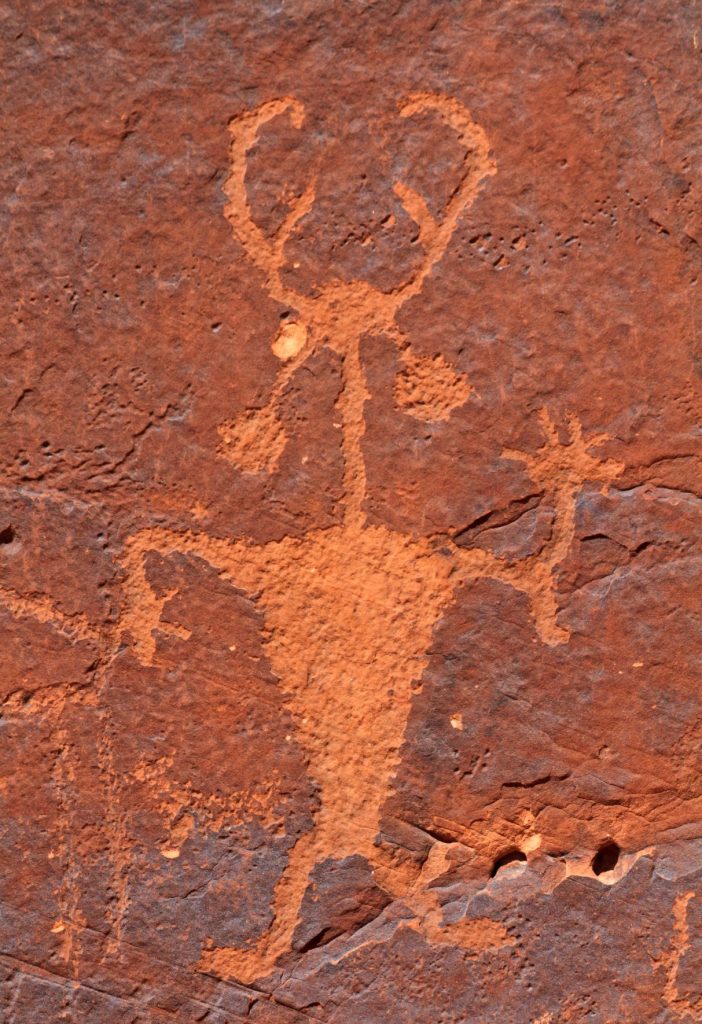
Dinosaur Tracks and Rock Art at Poison Spider Mesa
Location: Poison Spider Mesa, off Potash Road
Accessibility: Accessible by a short hike
Significance: This site uniquely combines dinosaur tracks with petroglyphs, creating a memorable stop for both geology and archeology enthusiasts.
Highlights:
- The petroglyphs include depictions of animals and human figures, alongside dinosaur footprints preserved in the rock.
- This site offers a fascinating combination of prehistoric life and ancient human expression.
.
